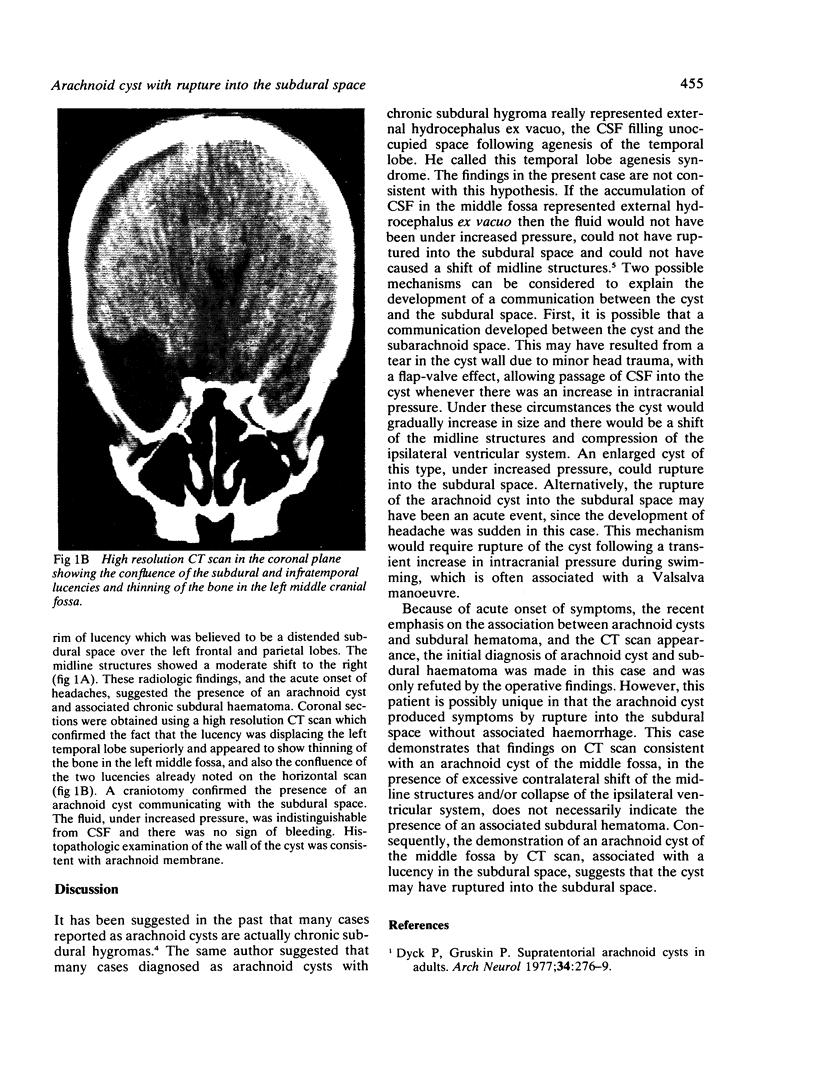Abstract
Arachnoid cysts which develop in relation to the cerebral hemispheres are usually found in the middle cranial fossa. These cysts are usually asymptomatic but can produce symptoms if there is haemorrhage into the cyst or the development of an associated subdural hematoma. Recent publications have emphasised the association of arachnoid cysts of the middle fossa with subdural haematomas. This report describes a case of an asymptomatic arachnoid cyst which ruptured into the subdural space. This event was followed by the development of symptoms despite the lack of haemorrhage.
Full text
PDF


Images in this article
Selected References
These references are in PubMed. This may not be the complete list of references from this article.
- Dyck P., Gruskin P. Supratentorial arachnoid cysts in adults. A discussion of two cases from a pathophysiologic and surgical perspective. Arch Neurol. 1977 May;34(5):276–279. doi: 10.1001/archneur.1977.00500170030004. [DOI] [PubMed] [Google Scholar]
- LaCour F., Trevor R., Carey M. Arachnoid cyst and associated subdural hematoma. Observations on conventional roentgenographic and computerized tomographic diagnosis. Arch Neurol. 1978 Feb;35(2):84–89. doi: 10.1001/archneur.1978.00500260022004. [DOI] [PubMed] [Google Scholar]
- Menezes A. H., Bell W. E., Perret G. E. Arachnoid cysts in children. Arch Neurol. 1980 Mar;37(3):168–172. doi: 10.1001/archneur.1980.00500520066012. [DOI] [PubMed] [Google Scholar]




